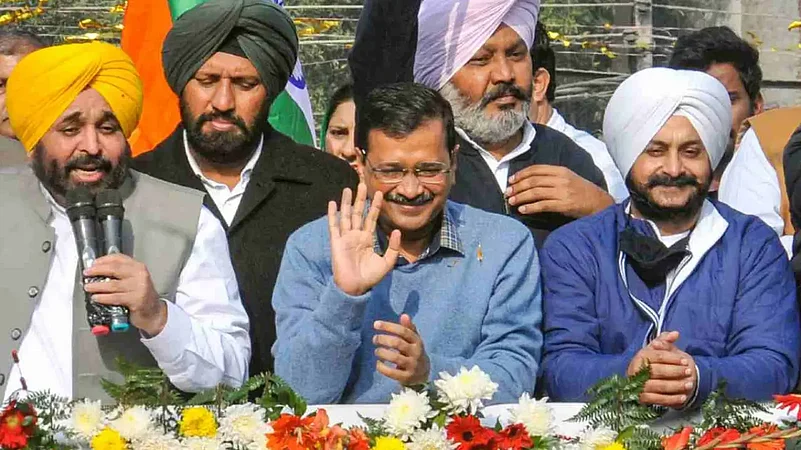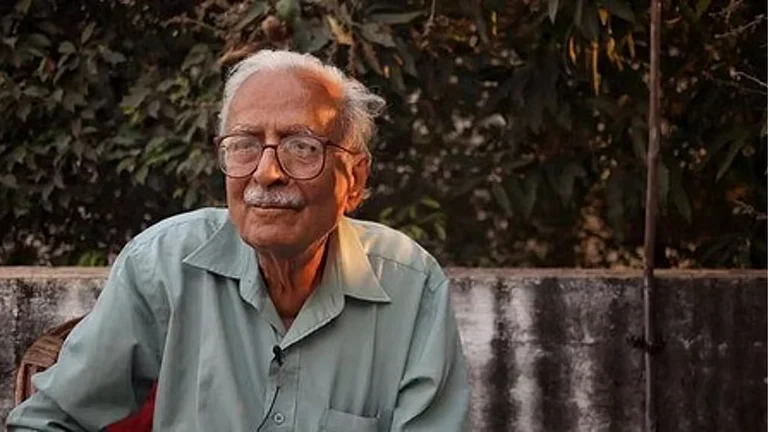Despite the yearlong farmers' agitation that concluded in November 2021, the total voter turnout for the Punjab assembly polls on February 20 showed an over five per cent decline compared to the 2017 elections. While election results will be revealed on March 10, exit polls have predicted that the Aam Aadmi Party (AAP) will decimate the Congress and win most of the seats, even though some independent local observers claim it is unlikely that AAP will touch the majority mark.
Both the pre poll and post poll scenarios clearly demonstrate the disillusionment of people of Punjab with the traditional parties—whether regional or national. According to the exit polls, AAP is going to sweep Punjab with 66 seats whereas the Congress and the Sukhbir Singh Badal-led Shiromani Akali Dal (SAD) would win 25 and 22 seats respectively. The poll predictions have given 5 seats to the BJP in Punjab assembly that has 117 seats with a majority mark of 59.
Still viewed as a new entrant in Punjab politics, AAP has had a roller coaster ride with a meteoric rise in the 2014 parliamentary polls but nosedived in the 2017 assembly elections. It won 20 seats with a vote share of 23.7 per cent in the last assembly elections, but didn’t announce a chief ministerial candidate. The silence sparked speculations that Arvind Kejriwal wanted to become the Punjab chief minister. However, this time around, the party did not repeat the mistake. It declared its Sangrur MP, Bhagwant Singh Mann, a popular Sikh face in the Malwa region, as its chief ministerial candidate.
AAP’s growing popularity in Punjab is due to its successful Delhi model of governance that is full of achievements in areas concerning health & educational infrastructure, civic amenities and services for the poor. Soon after the historic green revolution, Punjab became a model of economic prosperity for other states. But almost two decades since, it began struggling with growing agrarian distress, unemployment, rural-urban divide, decline in industrial sector, and civic issues in small towns and villages. The traditional political parties here are criticised for ignoring the regional aspirations of the people, and many of these party leaders are considered responsible for these long-standing problems plaguing the state.
Additionally, the internal bickering in the incumbent Congress seems to have benefitted the AAP. According to political analysis, the state party unit not only failed to consolidate Dalit votes under leader Charanjit Singh Channi, but also the slugfest between senior leaders and erstwhile Punjab CM, Capt. Amarinder Singh, proved detrimental for the party’s image. Also, Congress and SAD remained unsuccessful in taking advantage of the farmers’ agitation, while AAP leaders Arvind Kejriwal, Manish Sisodia and Raghav Chadha paid frequent visits to the protest sites and ensured a regular supply of drinking water besides several other facilities.
Talking about its “Punjab Model” during electioneering, the AAP had promised to create job avenues for the youth, ensure drugs and corruption free Punjab, enforce strict punishment for those involved in sacrilege incidents, and improve the state of education and healthcare here. AAP also vowed to redress farmers’ issues and provide a congenial atmosphere for trade and industry to flourish. Many observers in their initial reactions say that AAP’s anticipated clean sweep would prove to be a nice experiment for Indian democracy as the new party would get a full-fledged state to govern, unlike Delhi that is a Union Territory.


























